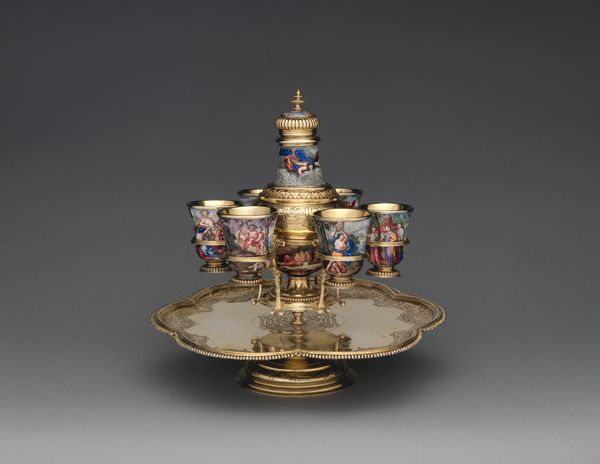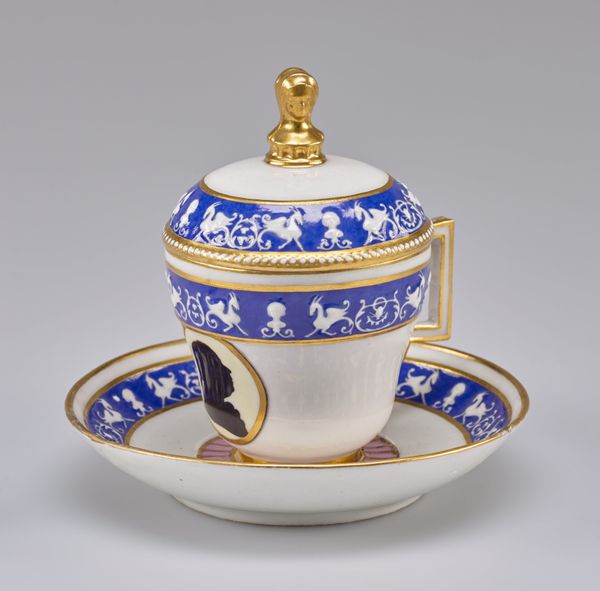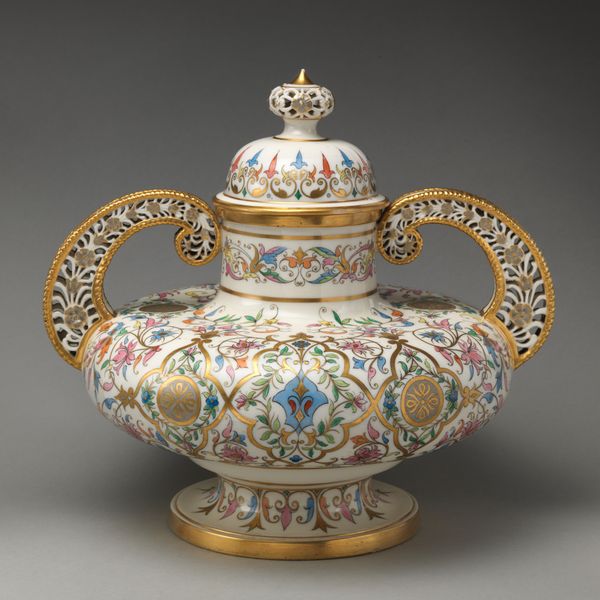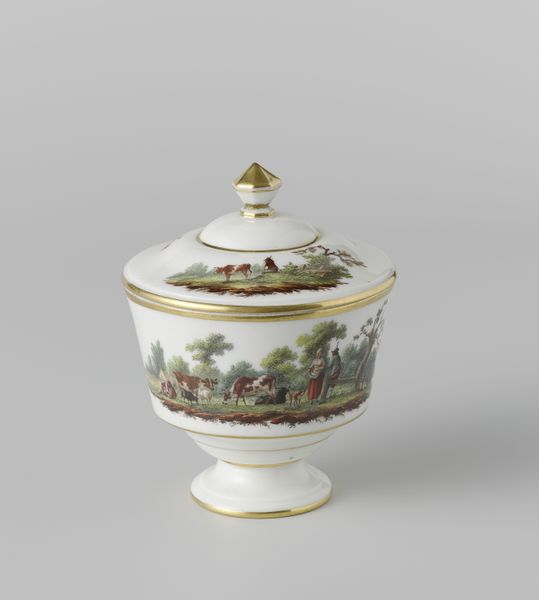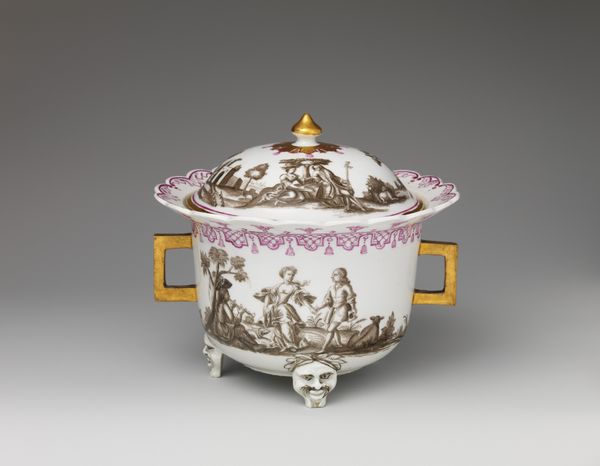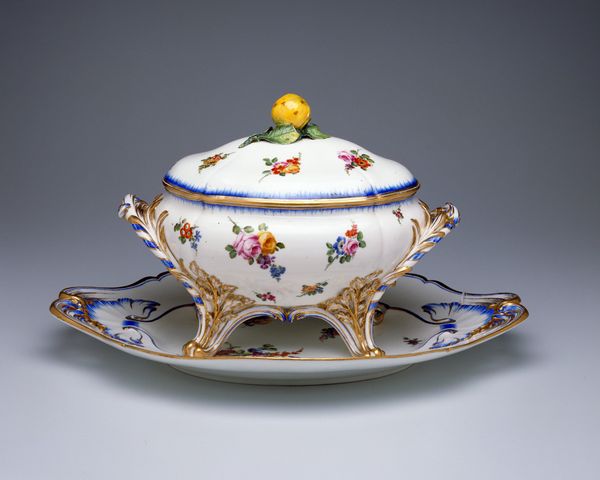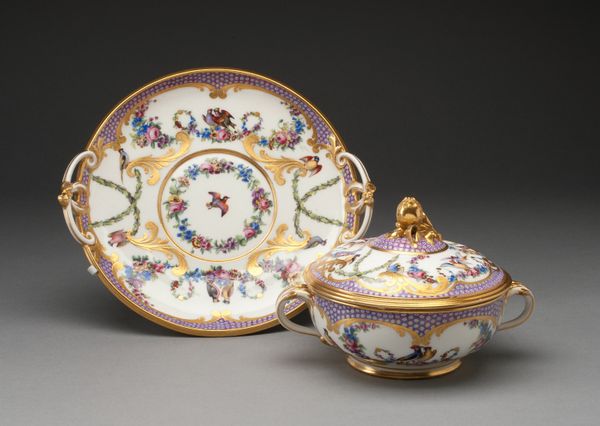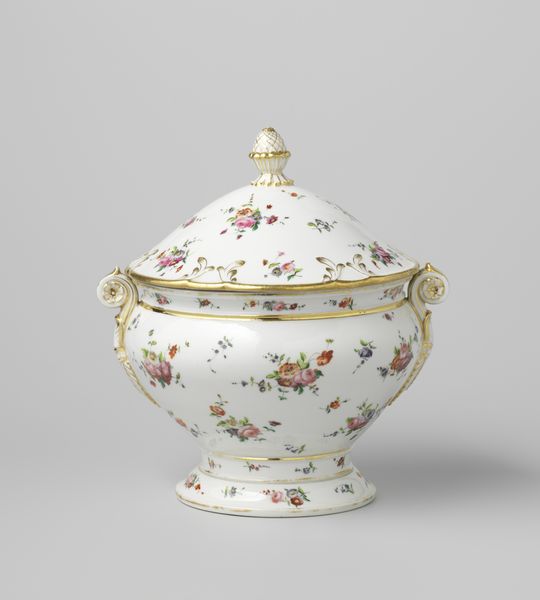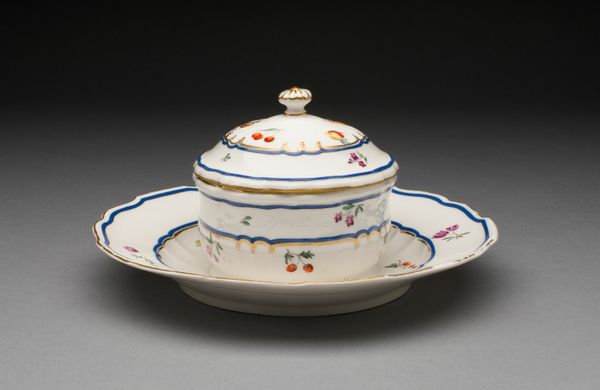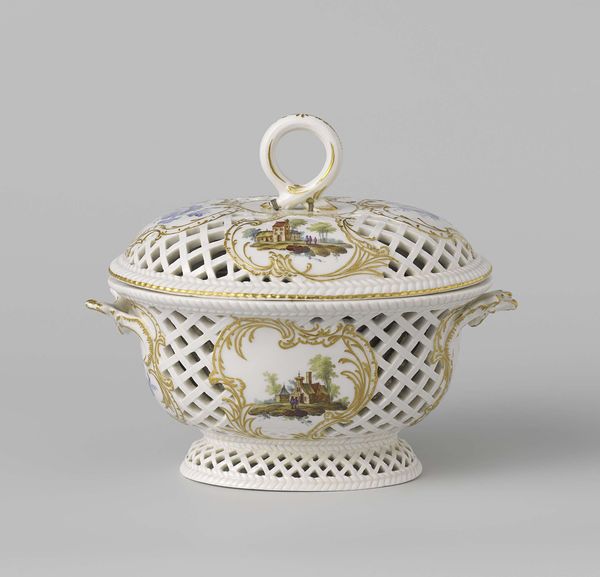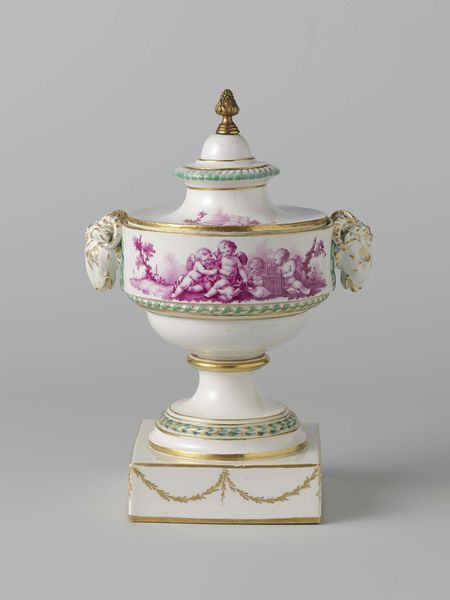
ceramic, guilding, porcelain
#
baroque
#
ceramic
#
guilding
#
porcelain
#
decorative-art
Dimensions: Tray (confirmed): 8 1/2 x 5 3/8 x 3/4 in. (21.6 x 13.7 x 1.9 cm); Porcelain beaker (confirmed): 2 11/16 x 2 5/8 x 2 5/8 in. (6.8 x 6.7 x 6.7 cm); Glass beaker with cover: 4 1/4in. (10.8cm); Assembled height tray, beaker, cover (confirmed): 4 7/8 in. (12.4 cm)
Copyright: Public Domain
Editor: Here we have a luxurious "Ensemble for Chocolate," crafted around 1735-1740. It's porcelain with gilding, a Baroque beauty currently residing at The Met. There's something almost playfully decadent about it. What strikes you most about this piece? Curator: Decadent is definitely a keyword here! The Baroque period, with its emphasis on ornate detail, was intrinsically linked to the rise of absolutist power and its self-fashioning. Consumption wasn't merely about satisfying needs; it was a performative act that cemented social hierarchies. Who had access to chocolate, and how did they consume it? Editor: I hadn't thought about the consumption part. So, the chocolate itself was a status symbol? Curator: Absolutely. This "Ensemble" isn't just a set of drinking vessels; it's a material expression of privilege and colonial exploitation. The availability of chocolate in Europe was directly tied to the brutal labor practices in cocoa-producing colonies. Editor: That's a heavy truth. The beauty of the piece almost obscures the context of exploitation. Curator: Precisely. Consider the very act of drinking chocolate from this elaborate set, presented as a sign of refined taste, and its link to exploitation. Who benefits from this narrative, and who is made invisible? The shell centerpiece almost suggests exoticism; does it symbolize newly acquired wealth and global reach? Editor: It is mind-blowing to reflect on this piece in light of the era’s colonialism and power structures. Curator: Indeed! Examining art through such an intersectional lens—focusing on race, class, and colonial power—reveals so much more than just aesthetic appreciation. Editor: This has completely reshaped my perspective. Thank you! Curator: My pleasure! I hope we’ve all learned that art can, and often should, provoke critical engagement.
Comments
No comments
Be the first to comment and join the conversation on the ultimate creative platform.
